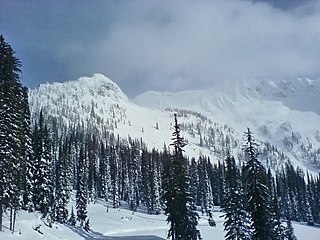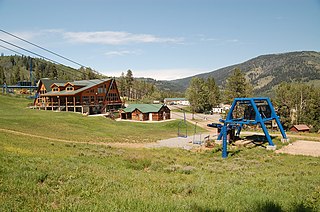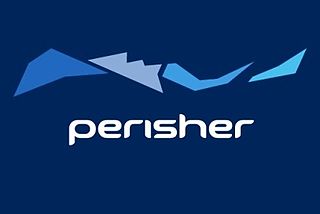
A ski area is the terrain and supporting infrastructure where skiing and other snow sports take place. Such sports include alpine and cross-country skiing, snow boarding, tubing, sledding, etc. Ski areas may stand alone or be part of a ski resort.

A ski area is the terrain and supporting infrastructure where skiing and other snow sports take place. Such sports include alpine and cross-country skiing, snow boarding, tubing, sledding, etc. Ski areas may stand alone or be part of a ski resort.
The US Forest Service defines a ski area as: "a site and associated facilities that has been primarily developed for alpine or Nordic skiing and other snow sports, but may also include, in appropriate circumstances, facilities necessary for other seasonal or year-round natural resource-based recreation activities, provided that a preponderance of revenue generated by the ski area derives from the sale of alpine and Nordic ski area passes and lift tickets, revenue from alpine, Nordic, and other snow sport instruction, and gross revenue from ancillary facilities that support alpine or Nordic skiing and other snow sports." [1]
Ski areas can extend over several municipalities (ex: La Plagne in France, Alta Badia in Italy, etc.) or several countries (ex: Portes du Soleil in France and Switzerland). A municipality can have several ski areas (ex: Chamonix-Mont-Blanc in France, Davos in Switzerland, Kitzbühel in Austria, etc.). The largest ski areas connect several ski resorts (ex: Les Trois Vallées in France). [2]
Alpine ski areas require substantial capital investment, a significant labor force, and maintenance of an infrastructure that provides dining and retail services to skiers and that assures reliable snow that is appealing to skiers in locations that are accessible to them. Consequently, they require a fee structure and ancillary attractions that provide the revenue to sustain them economically. [3] The natural settings of ski areas require the management of their environmental impacts, according to legal standards. [4] The profession of ski area management requires specialized training in degree programs. [5] Specialities include the maintenance of the lift and trail infrastructure and the management of the supporting commercial enterprises that rent and sell skis and that provide food services. [6] [7]

Skiing is the use of skis to glide on snow. Variations of purpose include basic transport, a recreational activity, or a competitive winter sport. Many types of competitive skiing events are recognized by the International Olympic Committee (IOC), and the International Ski and Snowboard Federation (FIS).
A ski is a narrow strip of semi-rigid material worn underfoot to glide over snow. Substantially longer than they are wide, and characteristically employed in pairs, skis are attached to ski boots with ski bindings, with either a free, lockable, or partially secured heel. For climbing slopes, ski skins can be attached at the base of the ski.

A ski resort is a resort developed for skiing, snowboarding, and other winter sports. In Europe, most ski resorts are towns or villages in or adjacent to a ski area – a mountainous area with pistes and a ski lift system. In North America, it is more common for ski areas to exist well away from towns, so ski resorts usually are destination resorts, often purpose-built and self-contained, where skiing is the main activity.

Charlotte Pass is a snow resort and village in the Snowy Mountains of New South Wales, Australia. The pass is in the Kosciuszko National Park where the Kosciuszko Road crosses Kangaroo Ridge. Charlotte Pass is the closest village to Mount Kosciuszko, the tallest mountain in Australia.

Ski patrols are organizations that provide medical, rescue, and hazard prevention services to the injured in ski area boundaries, or sometimes beyond into backcountry settings. Many have technical-medical certifications, such as Outdoor Emergency Care (OEC) provided by the National Ski Patrol (USA), that are specific to the winter-season environment and providing emergency medical services in remote locations. Many patrollers also hold EMS issued credentials, such as emergency medical technician or any other pre-hospital care certification. Due to the remote location and terrain, transportation is often limited to Rescue toboggan, snowmobile, or, for life-compromising injuries or extremely remote terrain, helicopter rescue. Depending on the ski area terrain, ski patrollers can be versed in a large variety of specialized rescues, such as avalanche search and rescue, outdoor emergency transportation, chairlift evacuation, and, in some cases, helicopter rescue techniques are taught. Patrols work to promote ski safety, enforce area policies, and help the injured within their jurisdiction. Ski patrollers also work to set up the mountain before it opens by conducting trail checks, providing avalanche control work, and setting up necessary equipment in preparation for the day. At the end of the day, they also conduct a sweep clearing the mountain for off-hours.

Ski touring is skiing in the backcountry on unmarked or unpatrolled areas. Touring is typically done off-piste and outside of ski resorts, and may extend over a period of more than one day. It is similar to backcountry skiing but excludes the use of a ski lift or transport.

Cypress Mountain is a ski area in West Vancouver, British Columbia, Canada, located in the southern section of Cypress Provincial Park, operated under a BC Parks Park Use Permit.

Snowmaking is the production of snow by forcing water and pressurized air through a "snow gun", also known as a "snow cannon". Snowmaking is mainly used at ski resorts to supplement natural snow. This allows ski resorts to improve the reliability of their snow cover and to extend their ski seasons from late autumn to early spring. Indoor ski slopes use snowmaking. They can generally do so year-round as they have climate-controlled environments.
The Canadian Ski Patrol is a national, non-profit, registered charitable organization that is volunteer-based and provides advanced first aid and emergency response services at more than 230 ski resorts and Nordic centres, as well as hundreds of recreational and sporting events across Canada. The Canadian Ski Patrol (CSP) has more than 4,500 registered members consisting of alpine and Nordic skiers, snowboarders, and non-skiers/boarders, making it the largest volunteer-based certified first responder organization in Canada. Members of the CSP are involved in accident prevention and intervention, managerial activities, and patroller and public education.

Badger Pass Ski Area is a small ski area located within Yosemite National Park. Badger Pass is one of only three lift serviced ski areas operating in a US National Park. It is situated five miles (8 km) south-southeast of the Chinquapin intersection of Wawona Road with Glacier Point Road in the southern area of Yosemite National Park. Glacier Point Road provides the access to this ski area. During high snow level and/or ski season, Glacier Point road terminates at Badger Pass Ski Resort. Under these conditions, the remainder of Glacier Point Road is used for cross-country skiing access to Glacier Point and other destinations in the high country.

Whitewater Ski Resort is a ski resort in western Canada, located a 25-minute drive from Nelson in southern British Columbia. In the Selkirk Mountains, the resort is situated in Ymir bowl, beneath the 2,400-metre-high (7,874 ft) Ymir Mountain. The Selkirks receive plentiful, dry snow, and the location in a high alpine bowl provides an annual snowfall average of approximately 12 m.

Park City Mountain Resort (PCMR) is a ski resort in the western United States in Park City, Utah, located 32 miles (51 km) east of Salt Lake City. Park City, as the ski resort and area is known, contains several training courses for the U.S. Ski Team, including slalom and giant slalom runs. During the 2002 Winter Olympics, it hosted the snowboarding events and the men's and women's alpine giant slalom events.

Vail Ski Resort is a ski resort in the western United States, located near the town of Vail in Eagle County, Colorado. At 5,289 acres, it is the third-largest single-mountain ski resort in the U.S., behind Big Sky and Park City, featuring seven bowls and intermediate gladed terrain in Blue Sky Basin.

Beaver Mountain is a ski area in the western United States, in northern Utah. First opened 85 years ago in 1939, it is located near the summit of Logan Canyon in the Bear River Mountains, west of Bear Lake and near the border with Idaho. While smaller and less developed than a number of Utah ski resorts, Beaver Mountain is very popular with residents of nearby Logan, Utah State University, the surrounding Cache Valley, and the Bear Lake region, including southeastern Idaho.

Bukovel is the largest ski resort in Eastern Europe situated in Ukraine, in Nadvirna Raion, Ivano-Frankivsk Oblast (province) of western Ukraine. A part of it is in state property. The resort is located almost on the ridge-lines of the Carpathian Mountains at elevation of 900 m (3,000 ft) above the sea level near the village of Polianytsia. It is one of the most popular ski resorts in the Ukrainian Carpathian Mountains and is situated 30 km (19 mi) southwest of the city of Yaremche. In 2012, Bukovel was named the fastest-growing ski resort in the world.

Skiing in Australia takes place in the Australian Alps in the states of New South Wales, Victoria and the Australian Capital Territory as well as in the mountains of the island state Tasmania, during the Southern Hemisphere winter.

Perisher Ski Resort is the largest ski resort in the Southern Hemisphere. Located in the Australian Snowy Mountains, the resort is an amalgamation of four villages and their associated ski fields, covering approximately 12 square kilometres (5 sq mi), with the base elevation at 1,720 metres (5,640 ft) AHD, and the summit elevation of 2,054 metres (6,739 ft) at the top of Mount Perisher. 4.4 square kilometres (1.7 sq mi) of this area is covered by 240 snow guns, which are used to artificially supplement the natural snowfall. Perisher was acquired by Vail Resorts, United States on 30 March 2015 for a sum of approximately AU$177 million.
The Mount Buller Alpine Resort is a ski resort located on Mt Buller in the Australian state of Victoria.

Skiing in New South Wales takes place in the high country of the Snowy Mountains of New South Wales during the Southern Hemisphere winter.
This glossary of skiing and snowboarding terms is a list of definitions of terms and jargon used in skiing, snowboarding, and related winter sports.